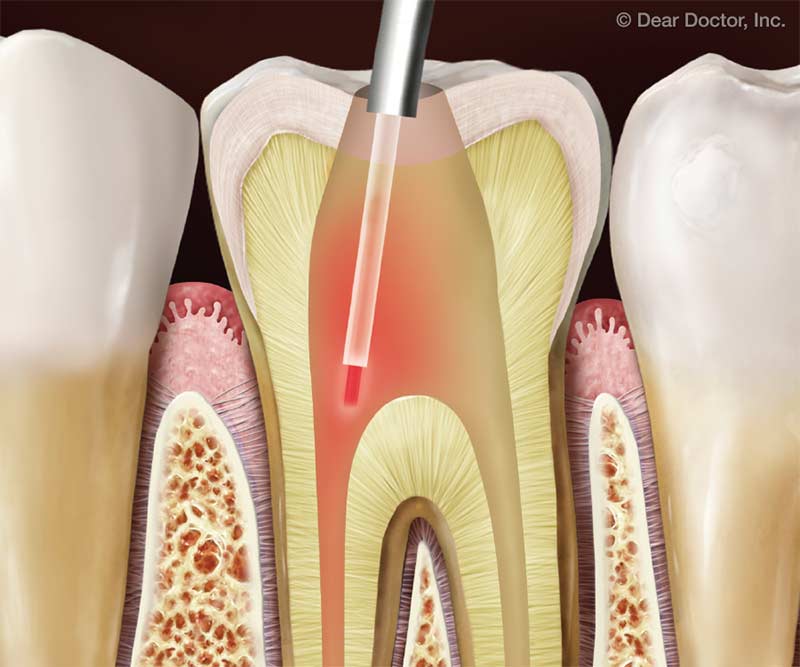The Use of Lasers in Disinfection and Cleanliness of Root Canals
The outcome of root canal treatment is based on efficient disinfection of the root canal system and prevention of reinfection. Current chemomechanical cleaning methods do not always achieve these goals, and insufficient root canal disinfection is the main reason for endodontic failure. Due to high energy content and specific characteristics of laser light, laser treatment has been proposed for cleaning and disinfecting the root canal system.
Diode lasers emit radiation within the visible (mostly 660 nm) and infrared (810 to 980 nm) range of the electromagnetic spectrum. In fact, laser light irradiation of relatively low intensity during longer time is less destructive than those applied for short-duration at high intensities. Moreover, there is a minimal level or threshold of energy required for specific types of interaction to occur.Due to the higher absorption coefficient in water (0.68 cm-1), diode lasers have lower penetration depth into the dentine (up to 750 µm) compared to Nd:YAG laser, and cause minimal thermal damage.
Today, lasers can be used in various endodontic procedures such as: pulp capping/pulpotomy, cleaning and disinfecting the root canal system, obturation, endodontic retreatment, and apical surgery. There is consensus that laser irradiation has the potential to kill microorganisms and to remove debris and smear layer from root canals. In root canal disinfection, there is sufficient evidence to suggest that specific laser is superior to the traditional endodontic treatment.
